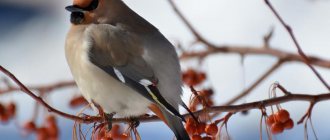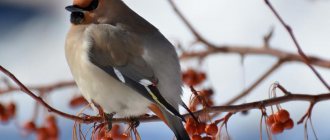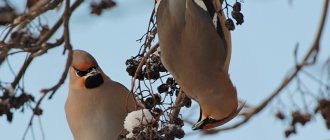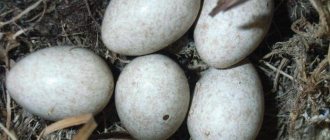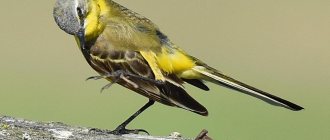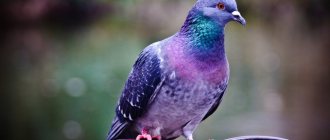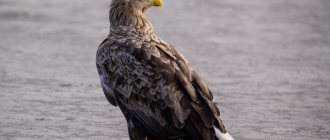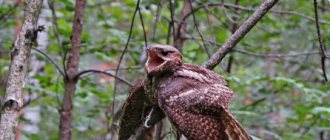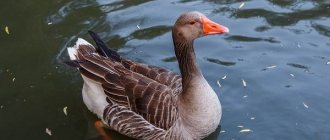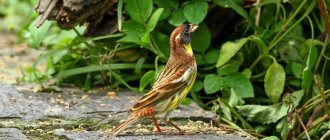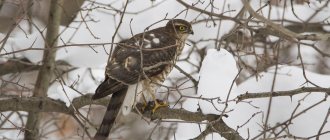- Wild animals
- >>
- Birds
Lapwing are the most colorful inhabitants of open landscapes.
It is unmistakable due to its silhouette with a long crest of feathers, the purple sheen of its dark plumage and its voice. This is the most common species in the genus of lapwings - Vanellus vanellus, also known in our country under the second name pigalitsa. Europeans in different countries call it differently: Belarusians - kigalka, Ukrainians - kiba, Germans - kiebitz, English - peewit. In the hysterical cry of these birds, the Slavs heard the inconsolable cry of grieving mothers and widows, so lapwings were protected and revered on their lands. It was considered reprehensible to kill adult birds and destroy their nests.
Origin of the species and description
Photo: Chibis
The genus Vanellus was established by French zoologist Jacques Brisson in 1760. Vanellus is Medieval Latin for “fan wing.” The taxonomy of the genus is still controversial. No major revision can be agreed upon between scholars. Up to 24 species of lapwing have been recognized.
Video: Chibis
Morphological characters are a confusing mixture of apomorphic and plesiomorphic characters in each species, with few obvious relationships. Molecular data do not provide sufficient insight, although lapwings have not yet been thoroughly studied in this aspect.
Interesting fact: In the 18th century, lapwing eggs were an expensive delicacy on the stately tables of nobles in Victorian Europe. Frederick Augustus II of Saxony demanded a supply of fresh lapwing eggs in March 1736. Even Chancellor Otto von Bismarck received a gift of 101 swamp eggs from the city of Jever for his birthday.
Currently, the collection of lapwing eggs is prohibited throughout the European Union. In the Netherlands, it was legal to collect eggs in the province of Friesland until 2006. But it is still a popular sport to find the first egg of the year and give it to the king. Hundreds of people travel to the meadows and pastures every year. The one who finds the first egg is revered as a folk hero.
Today, only to search, and in earlier times, to collect swamp eggs, a license was needed. Today, enthusiasts go into the meadows and mark the nests so that farmers can circle them or guard the nests so that they cannot be trampled by grazing.
Appearance and features
Photo: Lapwing bird
The lapwing is a bird 28–33 cm long, with a wingspan of 67–87 cm and a body weight of 128–330 g. Iridescent greenish-purple wings are long, wide and rounded. The first three main feathers have white tips. This bird has the shortest legs of the entire family of hornbills. Lapwings are mostly black and white in color, but the back part has a greenish tint. Their plumage on the sides and belly is white, and from the chest to the crown is black.
Males have a distinctive thin and long crest resembling a black crown. The throat and chest are black and contrast with the white face, and there is a horizontal black stripe under each eye. Females in plumage do not have the same sharp facial markings as males and also have a shorter crest. In general they are very similar to males.
In young birds, the head crest is even shorter than in females and has a brownish color, their plumage is duller than that of an adult. Lapwings are the size of a pigeon and look very strong. The underside of the body is bright white, and there is a black shield on the chest. In males the edges are more strongly defined, while in females they are paler and with blurred edges, blending into the white plumage of the breast.
The male has a long head feather and the female has a short feather. The sides of the head are white. Only in the area of the eye and the base of the beak are the animals drawn gloomily. Here the males are more intensely colored black and have a distinctly black throat during the breeding season. Young men and women of all ages have a white throat. The wings are unusually wide and rounded, which corresponds to the English name of the lapwing - “lapwing”.
Waxwings
People call these birds Khokhliki, which very accurately conveys the main feature of their appearance. The waxwing is a small bird, about 23 cm in length and weighing up to 70 g.
The waxwing family and genus Waxwings includes only 3 species:
- The common waxwing is an inhabitant of the taiga zone.
- The Amur waxwing is a common bird in the Amur and Primorye regions. It is found in wintering grounds in China, Korea and Japan.
- The American waxwing is a typical inhabitant of the forests of Canada and the northern states of the United States.
All waxwings are birds with a crest. They are famous for their singing talent and insatiable eating of berries. Overripe fruits cause fermentation in the stomachs of birds, and the released alkaloids cause disorientation. You've probably heard stories about "drunk waxwings", which often end in tragedy. Birds hit the windows, bump into all surrounding objects and fall from the sky in flocks. Therefore, in the old days, their appearance and strange behavior were considered a bad omen.
Where does the lapwing live?
Photo: Migratory bird lapwing
The lapwing (V. vanellus) is a migratory bird found in the northern Palearctic. Its range covers Europe, the Mediterranean, China, North Africa, Mongolia, Thailand, Korea, Vietnam, Laos and most of Russia. Summer migration occurs at the end of May, when the breeding season ends. Autumn migration occurs from September to November, when young individuals also leave their native areas.
Interesting fact: Migration distances can range from 3000 to 4000 km. Lapwing winters further south, as far as North Africa, northern India, Pakistan and some areas of China. Migrates mainly during the day, often in large flocks. Birds from the westernmost regions of Europe live permanently and do not migrate.
Lapwings arrive very early to their nesting sites, somewhere from late February to April. Initially, the lapwing colonized marsh areas and salt marshes on the coasts. Birds now increasingly live on farmland, especially on crops with wet areas and areas without vegetation. For breeding, it prefers to settle in wet meadows and grassy swamps, sheltered by sparse bushes, while non-breeding populations use open pastures, wet meadows, irrigated lands, river banks and other similar habitats.
Nests are built on the ground in low grass cover (less than 10 cm). The bird is not afraid to live near people. The feathered one is an excellent flyer. The lapwings arrive early, there is still snow cover on the fields and worsening weather conditions sometimes force the lapwings to fly to the southern regions.
Tufted tit
The name of this bird speaks for itself. Thanks to its striking black and white conical crest, the tufted tit is often called a grenadier or grenadier.
The height of representatives of the species is from 11 to 14 cm, and they weigh only 14 g. The color of the plumage of the tufted tit is brownish-gray in the upper part and yellowish-white below.
This is an exclusively European bird, living in coniferous forests in the north of its range, and in deciduous forests closer to the south.
Also worth noting is the second species of the tufted tit genus - the gray-crested tit. This inconspicuous gray bird with a tuft lives in the tropical rainforests of South and East Asia.
What does lapwing eat?
Photo: Lapwing from the Red Book
Lapwing is a species whose existence is highly dependent on weather conditions. Among other things, cold winters with high rainfall negatively affect food supplies. This species often forages in mixed flocks where golden plovers and black-headed gulls can be found, the latter often predating them but providing some protection from predators. Lapwings are active day and night, however some birds, like golden plovers, prefer to feed at night when there is moonlight.
Lapwing loves to eat:
- insects;
- insect larvae;
- worms;
- small fish;
- small snails;
- seeds.
It looks for earthworms the same way a blackbird does in the garden, stopping, lowering its head to the ground and listening. Sometimes he knocks on the ground or stomps his feet to drive earthworms out of the ground. The proportion of plant foods can be very high. It consists of grass and crop seeds. They can happily eat sugar beet tops. However, worms, invertebrates, small fish and other plant materials make up the majority of their diet.
Earthworms and triggerfish are particularly important food sources for hatchlings because they satisfy energy needs and are easy to find. Pastures provide the greatest densities of earthworms, while cropland provides the least amount of feeding opportunities.
Features of character and lifestyle
Photo: Chibis
Lapwings fly very quickly, but not very fast. Their wing movements are very soft and smooth. Birds can be detected in the air mainly due to their characteristic, slowly oscillating flight pattern. Birds always fly during the daytime in transversely elongated small flocks. The lapwing can walk well and quickly on the ground. These birds are very sociable and can form large flocks.
In the spring you can hear pleasant melodic sound signals, but when the lapwings are alarmed by something, they make loud, slightly nasal, creaking sounds, very varied in volume, tone and tempo. These signals not only warn other birds of danger, but can also drive away a hesitant enemy.
Interesting fact: Lapwings communicate using flight songs, which consist of a specific sequence of flight types combined with a sequence of sounds.
Singing flights begin shortly before sunrise; they are usually short and abrupt. This goes on for an hour and then everything goes silent. Birds may also make special territorial calls where they call with an alarm threat as they leave their nest (usually in chorus) when danger approaches. The oldest specimens in the wild whose life has been scientifically confirmed have reached the age of 20 years.
Secretary Bird
These birds of prey with a crest of black feathers are depicted on the coats of arms of South Africa and Sudan. Their unusual name is explained by the clear resemblance of the birds to court secretaries, who in the old days decorated their wigs with goose feathers.
The size of adult males and females ranges from 1.25 to 1.55 m. Secretaries weigh about 4 kg. They live in African savannas, where they hunt mainly snakes, but will not refuse to eat a lizard, frog, small animal or bird. In Africa, secretaries are highly respected and appreciated for the fact that they regularly carry out their noble mission of exterminating snakes.
Social structure and reproduction
Photo: Pair of lapwings
Lapwing prefers nesting sites with lower vegetation densities and lower levels of ground vegetation cover. Already in March, you can observe mating dances in males, which consist of turns around an axis, small downward flights and other tricks. Lapwing makes sounds typical for the mating period. When it veers to the side during flight, the distinctive white side of the wing flashes. Mating flights can last a long time.
Once males arrive in the breeding area, these areas are immediately repopulated. The male jumps on the ground and stretches forward, so that the chestnut feathers and splayed black and white tail become especially noticeable. The male finds several holes, from which the female chooses one as a nesting site. The nest is a depression in the ground sparsely covered with dry grass and other material.
The nests of different pairs of lapwings are often visible to each other. There are advantages to raising chicks in colonies. This allows pairs to more successfully defend their broods, especially from air attacks. In bad weather, the onset of egg laying is delayed. If the eggs originally laid are lost, the female may lay a second clutch. The eggs are olive green in color and have many black spots that optimally camouflage them.
Interesting fact: The female lays her eggs in the center of the nest with the pointed end up, giving the clutch the shape of a four-leaf clover. This arrangement makes sense since the masonry occupies the smallest area and can best be covered and heated. There are mainly 4 eggs in the nest. The incubation period lasts from 24 to 28 days.
The chicks leave the nest quickly, a short time after hatching. Often adults are forced to move with the chicks to areas where more favorable living conditions can be found. From 31 to 38 days the chicks can fly. Sometimes the female is already laying eggs again, while the male is still busy raising chicks from the previous brood.
Natural enemies of lapwings
Photo: Lapwing bird
The bird has many enemies; they hide everywhere, both in the air and on the ground. Lapwings are excellent actors; adult birds, when danger approaches, pretend that their wing hurts and they drag it along the ground, attracting the attention of the enemy and thus protect the eggs or their young. In case of danger, they hide in vegetation, where the greenish shimmering plumage on top turns out to be a good camouflage.
Interesting fact: In case of danger, parents give the chicks special signs and sound signals, and the young chicks fall to the ground and freeze motionless. Due to their dark plumage, when stationary they look like a stone or a lump of earth and cannot be recognized by enemies from the air.
Parents can carry out fake attacks on any ground enemies, thus distracting predators from the nest or small chicks that cannot yet fly.
Natural predators include animals such as:
- black crows (C. corone);
- sea gulls (L. marinus);
- ermine (M. erminea);
- herring gulls (L. argentatus);
- foxes (V. vulpes);
- domestic cats (F. catus);
- hawks (Accipitrinae);
- wild boars (S. scrofa);
- martens (Martes).
As populations of foxes and wild boars have increased significantly in some places, due to the absence of larger predatory animals, their influence has limited the breeding of lapwings. on the number of lapwings over several years. In addition, parasites and infectious diseases also have a negative impact on the bird population. However, their worst enemy is man. It is destroying their habitat through agricultural expansion.
Jay
Along with waxwings, the jay is one of the most famous forest birds with a crest. Adults grow up to 40 cm including the tail and weigh about 200 g. Their wide crest can stick up or look sleek.
The name of the bird comes from the Old Russian word “soy”, which meant “to shine”. Indeed, the jay's plumage is quite variegated: the body is brick-colored, the tail and wings are black, and the shoulders are turquoise.
These birds can be found in the forests of Europe, East Asia and northern Africa. Jays are famous for their amazing ability to imitate onomatopoeia. They easily imitate squeaks, knocks and even the human voice.
Population and species status
Photo: Migratory bird lapwing
Over the past 20 years, lapwing populations have suffered up to 50% losses, including a significant reduction in breeding sites across Europe. In the past, numbers have declined due to overuse of land, wetland drainage and egg harvesting.
Today, the productivity of lapwing breeding is threatened by:
- consistent introduction of modern methods of agriculture and water resources management;
- The species' migratory habitats are also under threat on the Baltic Sea coast due to oil pollution, bush overgrowth resulting from changes in land management, and land abandonment;
- spring cultivation destroys clutches in arable fields, and the appearance of new mammals can become a problem for nests;
- mowing meadows, heavily fertilizing them, spraying with herbicides, pesticides, biocides, grazing large numbers of livestock;
- high condensation of vegetation, or it becomes too cool and shady.
High rates of population decline and loss of breeding sites have been recorded in Armenia. Intensification of land use and hunting are suspected to be threats, but further research is needed to clarify the threats. There is a lot of community effort to help restore lapwing habitat through the Environment Programme.
